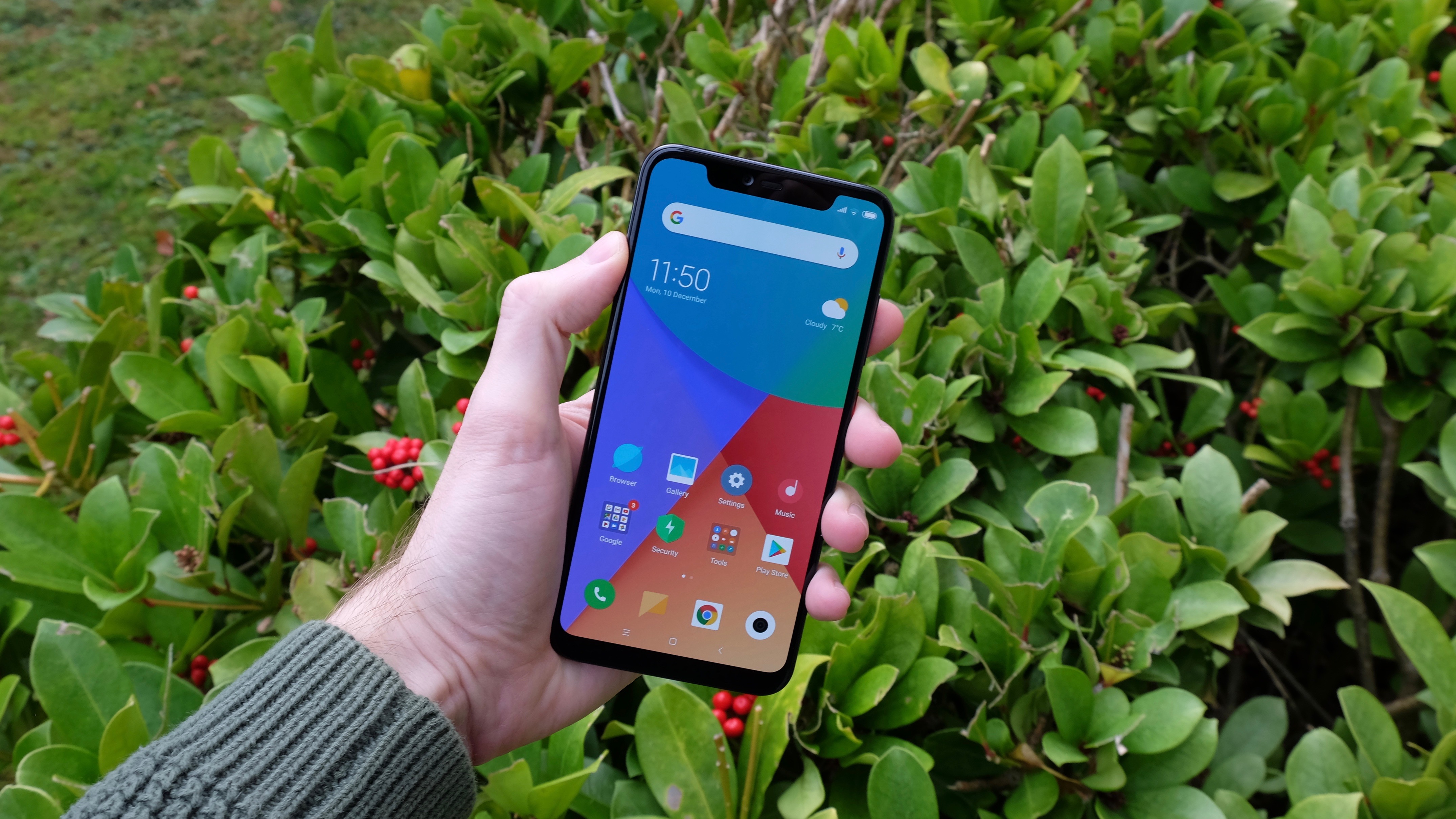Why you can trust TechRadar
Interface and reliability
- Android 8.1 with MIUI 10.0
- Cluttered but very customisable
We haven’t encountered Xiaomi’s products too often here in the UK. There’s a chance that the ones you have seen, such as the Xiaomi Mi A2, were running stock Android.
That’s not the typical Xiaomi way, though. The company uses its own custom MIUI interface, and that’s precisely what the Xiaomi Mi 8 Pro comes bundled with.
MIUI 10.0 is layered upon the now-outdated Android 8.1. As ever with such heavily tinkered-with UIs, it’s a bit of a mixed bag.
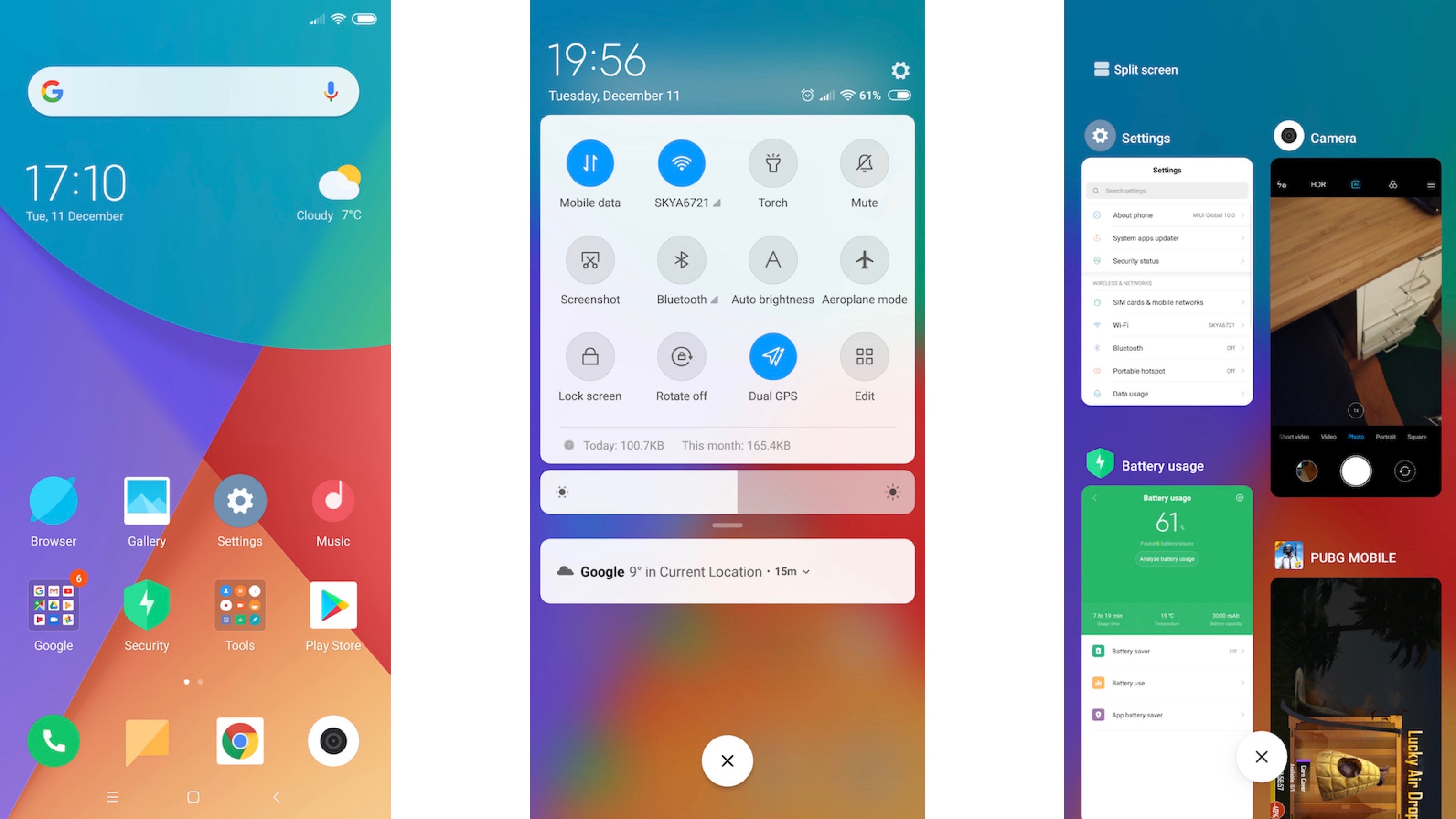
To this particular writer’s eyes, MIUI is too busy and too fussy. It delves into every nook and cranny of the clean and crisp Android OS and makes it, well, a good deal less clean and crisp.
From the navigation keys that are on the wrong way round, to the app switching menu that presents open apps in a jumbled scrolling list format and the shortcut screen that elbows out Google feed’s position to the left of the home screens, it will have digital neat freaks and Google traditionalists alike tutting.
After a few days, though, your brain will start to rewire itself to Xiaomi’s way of thinking. Some may even prefer Xiaomi’s brash menus and widgets and its flat, simplistic icons.
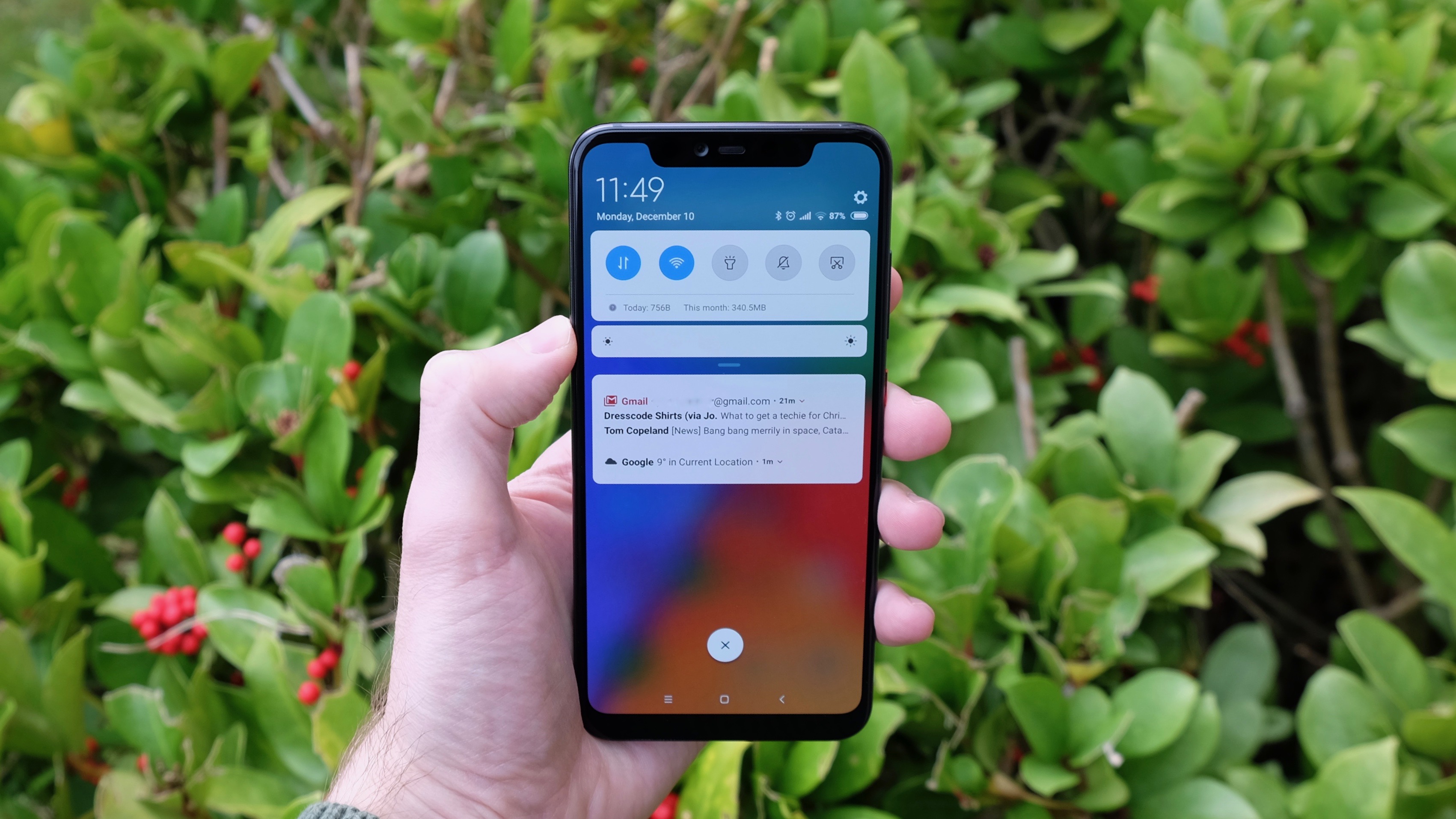
While we still prefer stock (and stockish) Android, we closed the week with more or less full mastery of the MIUI experience. It can’t be denied that it’s a smooth operator, either, with none of the stuttering animations that you’ll find with certain other custom UIs.
MIUI is eminently customisable, too. You can set up a number of gesture shortcuts for the likes of the camera, the torch function, split screen operation and much more. There’s also an optional Quick Ball overlay that can provide further home screen shortcuts with a swipe in from the side.
You can also opt to activate a gestural navigation system that does away with those wonky virtual navigation keys altogether.
Xiaomi’s full screen gestures system operates similarly to that of Apple’s iPhone XS. So, you swipe up from the bottom to go home, swipe and hold to bring up the app switcher, and drag in from the left to back up within apps (or from the right to go forward).
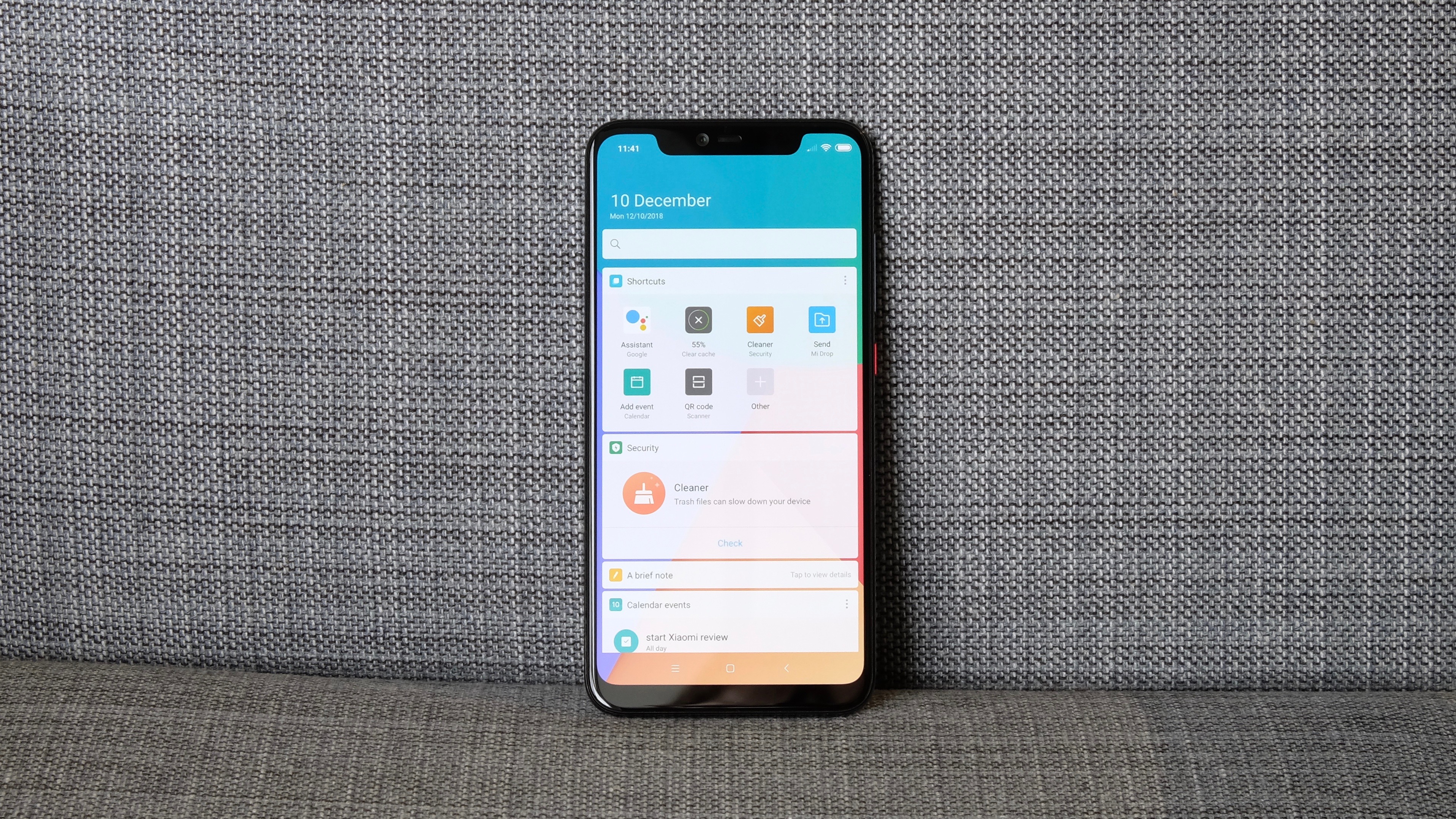
It works reasonably well, though the swipe and hold gesture doesn’t seem quite as fluid as Apple’s, and the swipe to go back gesture simply isn’t practical for one-handed usage.
Activating the home prompt when in landscape apps also seems a little clunky, and is the one occasion where the phone seems to flounder - if only momentarily.
Elsewhere, Second Space lets you set up a hidden alternate home screen, which could be handy for those who use their phones for both business and general use, or for those who like to hand their phone over to their kids to keep them entertained.
You can even set the phone to wake into this secondary account with a separate fingerprint, which is neat.
Movies, music and gaming
- No stereo speakers is a shame
- 128GB of storage is generous
The Xiaomi Mi 8 Pro handles media comfortably, though we wouldn’t say that it’s an outright powerhouse given the level of the competition.
That 6.21-inch AMOLED display shows Full HD video content off well, with accurate colours and nice deep blacks. However, the slight lack of brightness can impact the quality of the viewing experience while out and about or in strong artificial lighting.
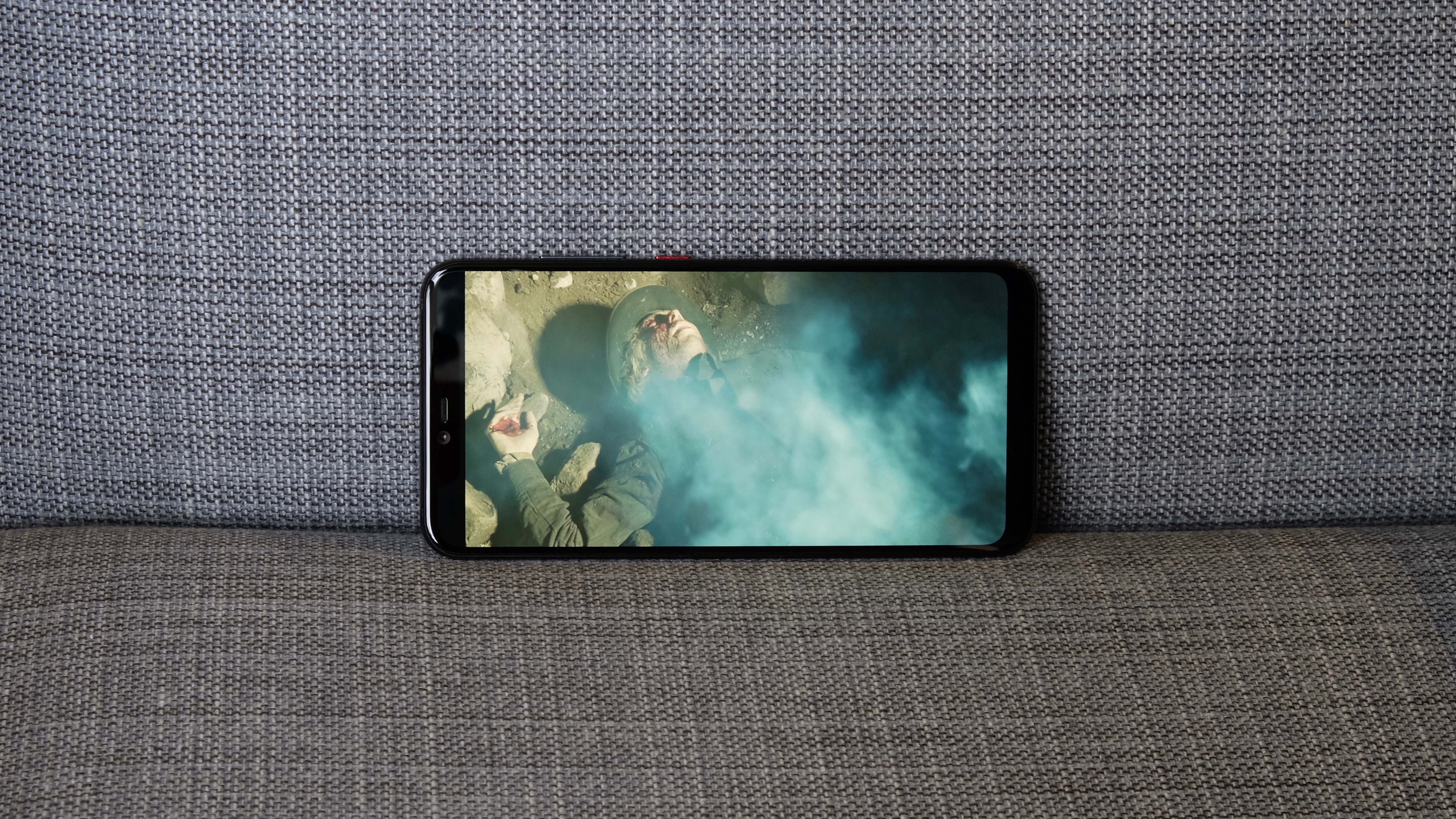
It’s a shame about the lack of a headphone jack too, because you won’t want to rely on the Mi 8 Pro’s single speaker for too much audio. It’s not the worst in terms of sound quality, but it’s not particularly loud, and the Huawei Mate 20 packs proper stereo speakers.
The phone is way more competitive on the storage front, with 128GB as standard. That should be plenty for all but the most dedicated media streaming refusenik. Such ones will be well catered for with Xiaomi’s own Music and Video apps, though most will likely download their chosen service of choice.
Google Play Music and Play Movies are included as standard, too.

The gaming experience on the Xiaomi Mi 8 Pro is largely faultless, with the phone’s large, balanced display serving a whole range of games well. It helps that the phone runs on Qualcomm’s high-end Snapdragon 845 chipset, and that it’s backed by a generous 8GB of RAM.
Again, it’s a shame about the slightly weedy non-stereo sound. The single speaker’s positioning on the bottom edge of the phone also leads to frequent blockages while playing landscape games like Guns of Boom and Asphalt 9.
Specs and benchmark performance
- Snapdragon 845 and 8GB of RAM
- Fluid performance
There are absolutely no worries on the performance front, with a Snapdragon 845 powering the Xiaomi Mi 8 Pro to strong performance across the board. A capacious 8GB of RAM adds a sense of headroom to every task you tackle.
We barely encountered a hint of a suggestion that the Mi 8 Pro was struggling throughout our time with the phone. Home screen navigation is slick, while jumping into the camera from the lock screen is near enough instantaneous.
Unlocking the phone using the fingerprint sensor can take a few beats longer than we’d like, but as has been discussed, that’s more an issue with the new in-display sensor technology than the Mi 8 Pro’s performance.
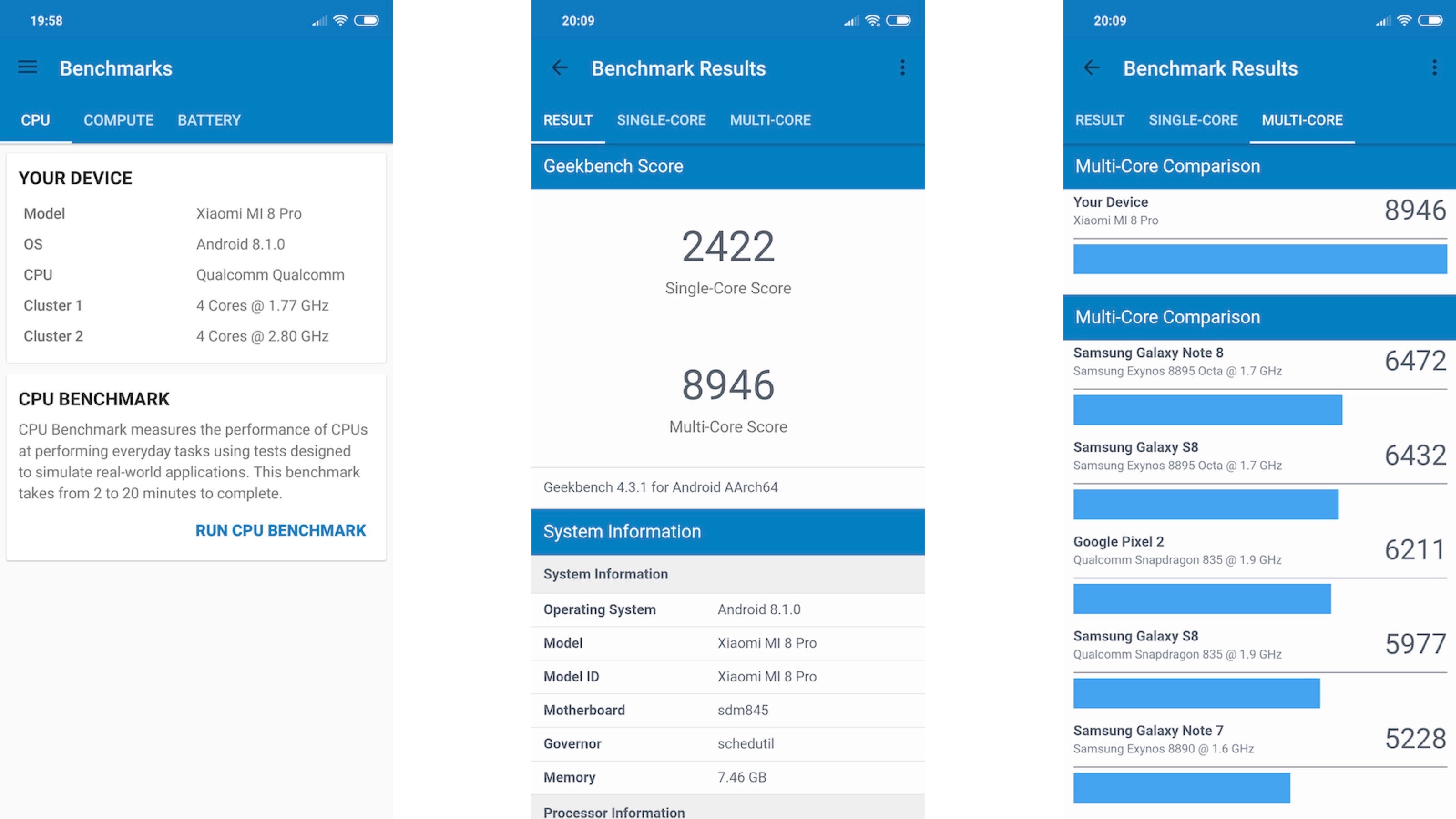
Gaming performance was similarly flawless, whether blasting through the colourful streets of Asphalt 9 or running and gunning in PUBG - both on High graphics settings, it should be added. We even cranked the frame rate up to Ultra and flicked HDR mode on in PUBG, without a noticeable performance hit.
This is reflected in an average Geekbench 4 score of 2,411 for single core and 8,998 for multi-core. That’s about right for a phone with this level of hardware. The similarly spec'd OnePlus 6 and OnePlus 6T scored 9,100 and 8,461 respectively on the multi-core front.
We should note that it falls well short of the current Android performance champ, however. The Huawei Mate 20 scored a whopping 9,900 in our tests. If you’re an absolute speed or gaming hound, that might be a better place to spend your money right now.
Current page: Anything else I should know?
Prev Page Battery life and camera Next Page Verdict and competition